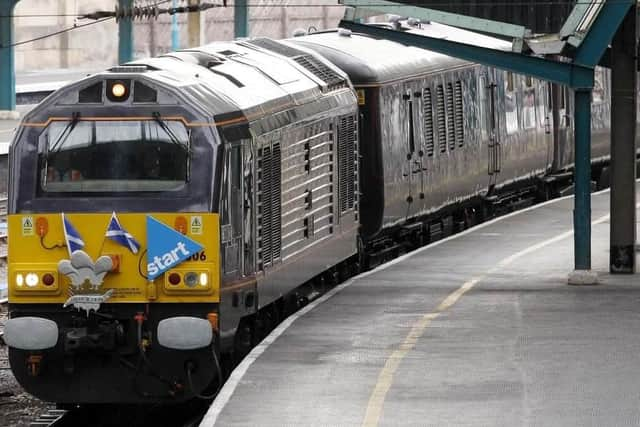Royal Train: Queen's coffin will no longer travel through Yorkshire on East Coast Main Line despite previous plans
A briefing sent out to media by Buckingham Palace concerns only press attendance at Edinburgh Airport, from where the coffin is expected to be flown to London by the RAF, and does not refer to Edinburgh Waverley Station.
British Transport Police also confirmed that they were not in negotiations regarding policing a potential rail journey.
Advertisement
Hide AdAdvertisement
Hide AdUnder long-term plans for the Queen’s death in Scotland, it was widely known that the intention was for the Royal Train to carry her back to London via the East Coast Main Line – which would have meant a ‘progress’ at a slow speed through Yorkshire stations Northallerton, York and Doncaster, where wellwishers could have gathered and flowers were expected to be left on the tracks.


Although there has been no official reason given for the change of plan, it is likely to relate to the security challenges and costs of policing the entire route from Edinburgh to London. There would have also been major disruption to scheduled services.
Transport journalists have been told by government sources that safety was a paramount concern and that the Royal Train plans were amended several years ago, prior to the pandemic.
In 2019 the difficulties of policing large sections of railway were highlighted during a number of high-profile trespass incidents involving enthusiasts who entered unfenced areas of track to photograph and film the Flying Scotsman during its tours of the country. At the time, Network Rail even considered banning the famous locomotive for safety reasons. It is likely that similar trespass attempts would be made during a Royal Train procession and it would be almost impossible to secure all areas of the line.
The Royal Train
Advertisement
Hide AdAdvertisement
Hide AdThe Royal Train has almost mythical status in railway history and previous monarchs owned opulent carriages, yet these days the Royal Family only loan the use of the coaches and locomotive.
DB Cargo, a freight company, own the two diesel locomotives that haul the Royal Train, and when not on state duties they are used for more mundane tasks such as driver route familiarity training and rescuing broken-down trains, and are also available for regular freight workings.
The permanent Royal Train consists only of nine specially-fitted sleeper, dining and lounge carriages owned by Network Rail, and locomotives are supplied by DB Cargo on request. Prior to 1977, individual railway companies kept their own carriages for VIP use. The coaches date from 1977-87 and are stored at the Wolverton Works depot near Milton Keynes when not in use.
Only the monarch and their heir can command use of the Royal Train, although it has sometimes been use to transport other VIPs, such as heads of state.
Advertisement
Hide AdAdvertisement
Hide AdThe drivers of the Royal Train are selected based on their skills, including whether they can stop within six inches of a designated position.
The two Class 67 diesels currently used to operate the train went into service in 2003, and are painted in the claret livery of the royal household. They are named Queen's Messenger and Royal Sovereign. Another unit, Diamond Jubilee, was allocated for occasional royal duties in 2012.
Steam locomotives have been used to haul the Royal Train on special occasions, such as in 2005 when the preserved Duchess of Sutherland pulled the carriages over the Settle to Carlisle line carrying Prince Charles.
Use of the Royal Train has declined in recent years for economical reasons, and members of the Royal Family often travel on scheduled services instead. The Queen often travelled first-class to the Sandringham estate on a local train from London to Norfolk.
